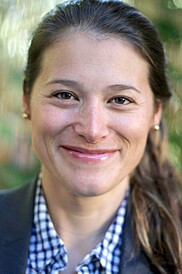Blog
Post category: pesticides
2024
Guest commentary
What’s new
Attacks on Scientists: Lessons from the Monsanto papers
In the documentary film Merchants of Doubt, Marc Morano, a former staffer for Senator James Inhofe (R-OK), described working to thwart action on climate by attacking the scientists speaking out about the crisis. “You’ve got to name names and you’ve got to go after individuals,” Moreno said. He describes how they “went after” climate scientists James Hansen and Michael Oppenheimer – “and we had a lot of fun with it,” he adds. . . .
2023
Guest commentary
What’s new
Atrazine: Latest science & policy analysis on a hormone-disrupting herbicide
Guest Post by Stacy Malkan
Atrazine is the second most widely used weed killer in the United States. Yet a significant body of scientific research suggests the herbicide harms the normal functioning of the endocrine system. In humans, atrazine has been linked to irregular menstrual cycles, abnormal birth weight and unexplained infertility. Animal studies have shown that atrazine may affect reproductive function in mammals, including estrous cycles, sperm motility, testosterone levels, and prolactin, luteinizing and follicle-stimulating hormone levels. In amphibians and various fish, atrazine has been shown to damage reproductive organs and systems. . . .
2023
What’s new
Childhood glyphosate exposure linked to metabolic disorders
Use of the herbicide glyphosate has increased significantly over the past 20 years. With this increased exposure comes increased risk of human health effects. . . .
2018
What’s new
Meet our 20 Pioneers under 40 in Environmental Public Health: Ana Maria Mora, MD, PhD
 Ana Maria Mora, MD, PhD is passionate about sharing what she has learned through her work in environmental public health with everyone. While she spends half of her time in Northern California studying the effects of early-life exposure to pesticides in children living in the Salinas Valley, she spends a lot of her time on research projects that impact the health of people in the country she where she was born and that she calls home, Costa Rica.
Ana Maria Mora, MD, PhD is passionate about sharing what she has learned through her work in environmental public health with everyone. While she spends half of her time in Northern California studying the effects of early-life exposure to pesticides in children living in the Salinas Valley, she spends a lot of her time on research projects that impact the health of people in the country she where she was born and that she calls home, Costa Rica.
While there is attention being given to the field of environmental health here in the U.S., she notes “that in Costa Rica, we’re always behind on research on environmental health topics. There are a lot of epidemiologists and exposure scientists in the US, but in Costa Rica we are very few [epidemiologists and exposure experts]; and the problem that we face is that some people refuse to believe that findings from studies conducted outside of our country can be applicable to our population.” . . .
2018
What’s new
Meet Our Pioneers under 20 in Environmental Public Health: Cynthia Curl, PhD, MS
 Cynthia Curl, PhD, MS knows about pesticides. In fact, it has been a topic of research for her for the last 15 years. While much of her work now compares levels of pesticide exposures among consumers of organic versus conventional produce, that isn’t initially where her research began.
Cynthia Curl, PhD, MS knows about pesticides. In fact, it has been a topic of research for her for the last 15 years. While much of her work now compares levels of pesticide exposures among consumers of organic versus conventional produce, that isn’t initially where her research began.
“I didn’t start out studying diet or organic food, I really started out looking at pesticide exposures among farm workers and their families. I was working with the Pacific Northwest Agricultural Safety and Health Center, whose mission is…to improve farm worker health. [But,] we had this unexpected finding where we had some kids in Seattle with higher exposures [to pesticides] than kids in farming communities out in Eastern Washington, and it took us a while to even come up with some ideas about why this may be. Ultimately, I started to suspect that it was diet just because of their differences in socioeconomic status and differences in dietary patterns that their parents reported,” Dr. Curl shares. . . .
2017
What’s new
Just released! Protecting Children’s Health Where They Live, Learn, and Play.
This report from the NIEHS/EPA Children’s Environmental Health and Disease Prevention Centers highlights some of the important contributions the centers have made toward reducing the burden of environmentally induced or exacerbated diseases placed on children. The report provides examples of success in the community and in support of public health. It is organized in three section:
- Health outcomes, presenting scientific findings from the Children’s Centers on diseases that sometimes affect children
- Environmental exposures, presenting research findings on chemicals and pollutants children are commonly exposed to through air, water and food.
- Hallmark features, highlighting the unique features that have facilitated the work of the Children’s Centers and advancements in the field.
2017
What’s new
Epigenetics and Environmental Health: A Short Educational Video
 Operating through epigenetic mechanisms, environmental exposures can get under our skin and affect our health. As new research comes forward shedding light on how the environment affects our epigenome, translating these findings to the broader public has been challenging. The University of Washington EDGE Center created a short animated video teaching the concept of epigenetics and how everyday exposures can alter gene expression and thus affect our health. View the video today. . . .
Operating through epigenetic mechanisms, environmental exposures can get under our skin and affect our health. As new research comes forward shedding light on how the environment affects our epigenome, translating these findings to the broader public has been challenging. The University of Washington EDGE Center created a short animated video teaching the concept of epigenetics and how everyday exposures can alter gene expression and thus affect our health. View the video today. . . .


